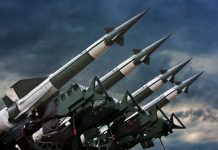
Myanmar’s military regime firing warning shots at a Chinese aid convoy has sparked global outrage amidst the devastating earthquake crisis.
Key Takeaways
- Myanmar’s junta fired at a Chinese Red Cross convoy, complicating aid delivery in conflict zones.
- The military coup in 2021 led to economic decline and disrupted essential services.
- Over 2,800 have died from a 7.7-magnitude earthquake, with aid operations hampered.
- Information from affected areas is limited due to communication blackouts.
- International bodies and countries, including Australia, demand unrestricted aid access.
Myanmar Junta’s Warning Shots
Myanmar’s military junta recently admitted to firing warning shots at a Chinese Red Cross convoy delivering earthquake relief, highlighting the severe challenges of providing aid in conflict-affected regions. The warning shots, reportedly due to the convoy entering without prior notice, underscore the ongoing civil war’s complexities affecting humanitarian efforts. This incident has drawn significant global backlash, particularly given the dire need for aid following a 7.7-magnitude earthquake that resulted in over 2,800 fatalities and significant infrastructure damage.
Myanmar’s military coup in 2021 severely impacted the nation’s economy and essential services, including healthcare. The blockage of aid routes by the junta is further exacerbating the situation. Human Rights Watch has urged the regime to allow unrestricted humanitarian access, arguing that aid routes should remain open to respond to such critical needs.
Obstruction and Global Responses
The earthquake’s impact is exacerbated by the region’s complex dynamics; aid delivery is particularly challenging in areas like the Sagaing region, where armed resistance groups have control. Furthermore, information from these zones remains scant due to deliberate blackouts by the junta. Senior military officials claim these actions are “necessary protective measures,” but humanitarian groups argue it is a strategy to weaponize aid, restricting supplies from reaching resistance-held territories.
“It’s necessary to keep transportation routes for relief efforts open and unobstructed,” said Guo Jiakun, a Chinese diplomat.
Despite announcing a 21-day ceasefire, reports of continued military airstrikes by armed groups cast doubts over the junta’s sincerity in facilitating aid. The United Nations has noted the disaster’s extensive impact, affecting over 28 million individuals, and announced a $12 million emergency aid commitment. International pressure remains critical for ensuring aid reaches those in need, bypassing military obstructions.
Navigating Aid Amidst Restrictions
Australia’s government pledged A$6.5 million, stressing the importance of not legitimizing the military regime through aid. “We take proactive steps to ensure our assistance does not legitimize the military regime in Myanmar,” stated Australian Foreign Minister Penny Wong, highlighting concerns over potential misuse of aid deliveries. Concurrently, Myanmar’s junta faces accusations of atrocities and airstrikes post-earthquake.
International experts and local groups are advocating for covert strategies to deliver aid effectively, emphasizing collaborations with well-vetted international organizations. With reports of significant roadblocks, prolonged checkpoints, and questioning by military forces, the aid delivery process is fraught with delays, complicating rapid relief actions essential in the crucial aftermath period of natural disasters.
“Myanmar’s junta cannot be trusted to respond to a disaster of this scale,” said Bryony Lau, director at Human Rights Watch Asia.
Sources:
- https://www.nbcnews.com/news/world/myanmar-junta-shoots-chinese-earthquake-aid-convoy-rcna199233
- https://www.bbc.com/news/articles/cp8je14g2eno
- https://www.nytimes.com/2025/04/02/world/asia/myanmar-quake-aid.html
- https://www.breitbart.com/asia/2025/04/02/myanmar-junta-soldiers-shoot-at-chinese-earthquake-aid-convoy/










